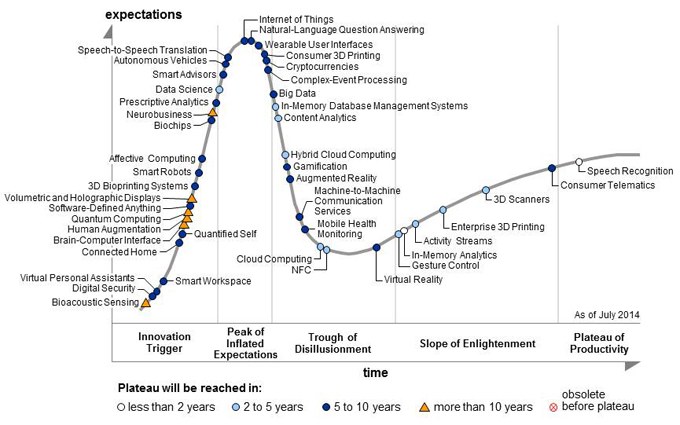According to Gartner's latest Hype Cycle research the internet of things (IoT) is the most over-hyped technology term today. The technology which is to set a world where every electronic device has a sim card and its own presence on the net would be between five and ten years away from going into production. However the concept is at the peak of inflated expectations. Gartner's annual “hype cycle” classifies emergent technologies in one of five categories based on how high expectations for them are.

A lack of standardisation in the area and the changing nature of the technology itself are part of the reason why widespread adoption is further than its promotors think. As Hung LeHong – vice president and Gartner Fellow – points out “Standardisation (data standards, wireless protocols, technologies) is still a challenge to more-rapid adoption of the IoT”. “A wide number of consortiums, standards bodies, associations and government/region policies around the globe are tackling the standards issues. Ironically, with so many entities each working on their own interests, we expect the lack of standards to remain a problem over the next three to five years.”
IoT would be at its peak. Initially a new technology enters the public's awareness with low expectations, which slowly rise as the potential becomes clear. Eventually expectations hit a peak where it is augured the technology will solve almost every problem known to mankind.
Near the top of the list are wearable computing, consumer 3D printing, big data and autonomous vehicles, which means those are all innovations that Gartner thinks are over-hyped at the moment.
After the peak comes the period when the realisation hits on that the technology is never going to perform as well as it was hoped which Gartner calls the “trough of disillusionment”. Examples of such technologies include NFC, augmented reality and gamification. The technology doesn't disappear from use. It continues to be refined throughout the “trough of disillusionment” until it enters the “slope of enlightenment” as the innovation finds its niche. This is when the public realises the potential of the product as with 3D printing and gesture control.
Finally, having become good enough to carry out its functions, the technology hits the “plateau of productivity”. The period of hype is over. Thus speech recognition has hit that plateau and is now ready for real world use whose market could still increase twofold to fivefold.
